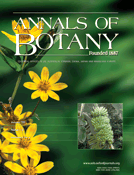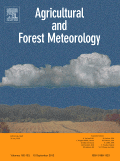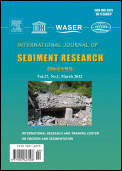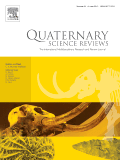
VEGETATION HISTORY AND ARCHAEOBOTANY
Scope & Guideline
Revealing the Secrets of the Past Through Vegetation Studies
Introduction
Aims and Scopes
- Palaeoecological Studies:
The journal publishes research on past ecological conditions using various proxies such as pollen, phytoliths, and macrofossils to reconstruct ancient environments and vegetation dynamics. - Archaeobotanical Research:
A core focus is on the analysis of plant remains from archaeological contexts to understand ancient agricultural practices, diet, and plant utilization by past human societies. - Human-Environment Interactions:
The journal explores how human activities, including agriculture and settlement patterns, have influenced vegetation and landscape changes over time. - Methodological Innovations:
It emphasizes the development and application of new methodologies for analyzing and interpreting archaeobotanical data, including statistical tools and software. - Long-term Vegetation Change:
Research often addresses long-term trends in vegetation change, linking them to climatic fluctuations and human impacts across different geographical regions.
Trending and Emerging
- Climate Change Impact Studies:
Recent publications increasingly focus on the effects of climate change on vegetation dynamics, emphasizing the need to understand historical responses to climate variability as a way to inform current ecological challenges. - Interdisciplinary Approaches:
There is a growing trend towards interdisciplinary studies that combine archaeobotany with genetics, anthropology, and environmental science, fostering a holistic understanding of past human-plant interactions. - Technological Innovations in Analysis:
The emergence of advanced analytical techniques, including machine learning and geographic information systems (GIS), is becoming more prevalent, allowing for more sophisticated analyses of archaeobotanical data. - Cultural and Economic Aspects of Plant Use:
Research is increasingly exploring the socio-economic dimensions of plant use, including trade, cultural practices, and the role of plants in ancient economies, reflecting a broader interest in the societal implications of agricultural practices. - Focus on Understudied Regions:
There is a noticeable increase in studies focusing on understudied regions, such as the Andes, Central Asia, and parts of Africa, highlighting the journal's commitment to expanding the geographical scope of archaeobotanical research.
Declining or Waning
- Traditional Crop Studies:
There has been a noticeable reduction in studies solely focused on traditional crops without a broader context of environmental or cultural impacts, indicating a shift towards more integrated approaches. - Single-Site Archaeobotanical Analyses:
Research that exclusively examines plant remains from single archaeological sites is becoming less prominent, as there is a growing trend towards comparative studies that incorporate multiple sites to provide a more comprehensive understanding of regional patterns. - Descriptive Studies Without Analytical Depth:
There appears to be a waning interest in purely descriptive studies of archaeobotanical finds without accompanying analytical frameworks or theoretical discussions, as the field increasingly values critical analyses and interpretations.
Similar Journals

ANNALS OF BOTANY
Connecting Researchers and Ideas in the Botanical RealmANNALS OF BOTANY, published by Oxford University Press, stands as a leading journal in the field of Plant Science, with a distinguished history that dates back to 1887. This esteemed journal, recognized for its contribution to the advancement of botanical research, holds a prestigious Q1 quartile ranking in its category as of 2023. With a commitment to sharing high-quality, peer-reviewed research, ANNALS OF BOTANY provides a vital platform for researchers, professionals, and students to disseminate novel findings and engage in scholarly discourse. Although it does not currently offer open access options, the journal remains accessible to a wide academic audience, further cementing its role in facilitating the exchange of knowledge within the global botanical community. For those interested in the dynamic and evolving world of plant sciences, ANNALS OF BOTANY is an indispensable resource.

AUSTRALIAN JOURNAL OF BOTANY
Championing the voice of plant scientists since 1953.The Australian Journal of Botany is a prestigious peer-reviewed journal published by CSIRO PUBLISHING, dedicated to advancing the field of plant sciences and ecology. Established in 1953, this journal provides a critical platform for researchers to share original research findings, reviews, and perspectives in subjects ranging from plant biology to ecological interactions, with a focus on Australian flora and its conservation. With an impressive impact factor and categorized in the Q3 quartile in both Ecology, Evolution, Behavior and Systematics and Plant Science, the journal ranks competitively within its fields, allowing authors to reach a diverse audience of professionals, students, and fellow researchers. The journal is accessible in print and electronically through its ISSN: 0067-1924 and E-ISSN: 1444-9862, providing wider access to vital research outcomes that influence environmental policies and natural resource management. As it aspires towards innovation and excellence, the Australian Journal of Botany remains an essential resource for those passionate about the richness of plant biodiversity and ecological understanding.

AGRICULTURAL AND FOREST METEOROLOGY
Connecting meteorology with the future of farming and forestry.AGRICULTURAL AND FOREST METEOROLOGY, published by Elsevier, is a premier journal dedicated to the intersection of meteorology, agriculture, and forestry, with a substantial impact on the understanding of climate interactions and their implications on natural resources and food security. Featuring an ISSN of 0168-1923 and an E-ISSN of 1873-2240, this journal has maintained an impressive track record since its establishment in 1984 and is set to continue through 2024. Currently categorized in the Q1 quartile across multiple fields—including Agronomy and Crop Science, Atmospheric Science, Forestry, and Global and Planetary Change—AGRICULTURAL AND FOREST METEOROLOGY is recognized as a leading source in its disciplines, ranked in the 94th percentile for both Agronomy and Atmospheric Science. Researchers and professionals in the field can expect to find high-quality, peer-reviewed articles that contribute significantly to the advancement of knowledge and practice. This journal serves as an essential platform for disseminating critical findings that inform science-based strategies for managing agricultural and forest ecosystems in response to a changing climate.

Archaeological and Anthropological Sciences
Bridging Disciplines, Uncovering InsightsArchaeological and Anthropological Sciences is an esteemed peer-reviewed journal published by Springer Heidelberg, specializing in the interdisciplinary fields of archaeology and anthropology. Since its inception in 2009, this journal has established itself as a pivotal resource for researchers and professionals, featuring cutting-edge studies that bridge the gap between the sciences and humanities. With its impressive 2023 Q1 rankings in Anthropology and Archaeology categories, the journal stands out in the Scopus landscape, ranking within the top 5% of its field—Rank #18/413 in Archaeology (Arts and Humanities) and Rank #28/502 in Anthropology. This is complemented by its commitment to disseminating high-quality research to a global audience, despite being a non-Open Access publication. The journal's scope encompasses innovative methodologies, archaeological findings, and anthropological insights that are vital for advancing knowledge and fostering academic discourse. As it moves toward its upcoming converged years, Archaeological and Anthropological Sciences continues to solidify its reputation as a key forum for scholarly exchange in these fields.

Mediterranean Botany
Exploring the Richness of Mediterranean FloraMediterranean Botany is a distinguished peer-reviewed journal dedicated to the flourishing fields of Ecology, Plant Science, and Ecology, Evolution, Behavior and Systematics. Published by the Universidad Complutense de Madrid, Servicio Publicaciones, this Open Access journal has been disseminating valuable research since 2018, ensuring that findings are accessible to a global audience, with an emphasis on Mediterranean vegetation and biodiversity. With an ISSN of 2603-9109, it contributes significantly to the academic discourse in its category quartiles, recently featuring in Q3 for Ecology and related fields. Notably, Mediterranean Botany ranks within the top half of its category in Scopus, highlighting its relevance and contribution to the scientific community. Researchers, professionals, and students alike will find the journal to be a vital resource for latest discoveries, trends, and conservation strategies in Mediterranean ecosystems, positioning it as an essential platform for advancing knowledge and fostering collaboration within the plant sciences.

International Journal of Sediment Research
Fostering Global Collaboration in Sediment ResearchThe International Journal of Sediment Research, published by KEAI PUBLISHING LTD, stands as a premier platform for advanced studies in the fields of geology and stratigraphy. With an impressive Q1 ranking in both categories in 2023, this journal hosts a wealth of research that has significantly contributed to our understanding of sediment dynamics and geological processes since its inception in 1981. The journal is dedicated to publishing high-quality research articles, reviews, and case studies that span a broad range of topics, including sedimentology, stratigraphic analysis, and environmental geology. Researchers, professionals, and students will find invaluable insights within its pages, courtesy of cutting-edge methodologies and rigorous peer-review standards. Despite its non-open access status, the journal ensures a global reach, facilitating knowledge sharing and collaboration among academia and industry. With a rich history and a forward-looking approach to scientific exploration, the International Journal of Sediment Research remains a vital resource for those committed to advancing our understanding of Earth's sedimentary systems.

TUEXENIA
Fostering dialogue on pressing environmental challenges.TUEXENIA is a prominent academic journal dedicated to advancing the fields of Ecology, Management, Monitoring, Policy and Law, Nature and Landscape Conservation, and Plant Science. Published by the Floristisch-Sozioogischen Arbeitsgemeinschaft e.V. in Germany, this journal has established itself as a pivotal resource for researchers, professionals, and students alike since its inception in 1985, with a continued commitment to scholarly excellence through 2024. Distinguished by its consistent Q3 quartile rankings across several related categories in 2023, TUEXENIA serves as a vital platform for the dissemination of innovative research and practical applications that address the pressing challenges in environmental science. While it currently does not support an open-access model, the journal's compelling content is crucial for those seeking to deepen their understanding and contribute to impactful discussions in ecology and conservation. With an increasing audience on platforms like Scopus, TUEXENIA is instrumental in bridging the gap between research and real-world environmental management, making it an essential read for anyone engaged in these dynamic fields.

Magallania
Fostering Interdisciplinary Dialogue for a Better TomorrowMagallania is a pioneering open-access journal published by UNIV MAGALLANES, dedicated to advancing scholarly discourse in the field of Social Sciences. Since its inception in 2005, the journal has provided a platform for original research, critical reviews, and insightful analyses that address diverse issues affecting society in both local and global contexts. Based in Punta Arenas, Chile, Magallania has established itself as an essential resource for researchers, professionals, and students alike, particularly in its current position within the Q2 category of Social Sciences (miscellaneous) as of 2023. With an ongoing commitment to quality and accessibility, the journal aims to foster interdisciplinary dialogue and promote knowledge exchange, all while contributing to a deeper understanding of social dynamics and challenges. Magallania is indexed in Scopus, ranking competitively in the field; it reflects the dynamic scholarly environment that characterizes the vibrant region of Magallanes and beyond.

NORDIC JOURNAL OF BOTANY
Exploring Botanical Frontiers with Innovative ResearchNORDIC JOURNAL OF BOTANY, published by WILEY, is a distinguished journal that serves as a vital platform for the dissemination of innovative research in the fields of Plant Science and Ecology, Evolution, Behavior and Systematics. With an ISSN of 0107-055X and E-ISSN 1756-1051, this journal has been a crucial part of the academic landscape since its inception in 1981, continuing to contribute significantly to the literature up to 2024. NORDIC JOURNAL OF BOTANY holds a commendable Q2 ranking in Plant Science and Q3 in Ecology, which underscores its impact and relevance in the scientific community. Despite the absence of Open Access options, the journal offers robust access features that ensure researchers and readers can easily engage with its meticulously curated content. Aimed at both seasoned professionals and emerging scholars, the journal not only publishes high-quality articles but also fosters collaboration and knowledge exchange across various related disciplines, thereby solidifying its role as a cornerstone in botanical and ecological research.

Quaternary Science Reviews
Bridging Archaeology, Ecology, and GeologyQuaternary Science Reviews is a premier international journal published by PERGAMON-ELSEVIER SCIENCE LTD, dedicated to the multidisciplinary study of the Quaternary period and its implications across a variety of scientific fields, including archaeology, geology, ecology, and environmental science. With an impressive impact factor that places it in the Q1 quartile across multiple categories such as Archaeology, Ecology, and Geology, it stands as a beacon of scholarly excellence. The journal, which has been in circulation since 1982 and converges its knowledge through to 2024, is instrumental for researchers and professionals seeking to explore the complexities of climate change, biodiversity, and earth systems. Though it does not currently offer Open Access options, its well-curated content remains vital for academic advancement and is accessible to a broad audience through institutional subscriptions. Positioned at the forefront of modern scientific inquiry, the journal fosters an environment for sharing pivotal findings and fostering intellectual discussions, making it an indispensable resource for students, practitioners, and researchers alike.